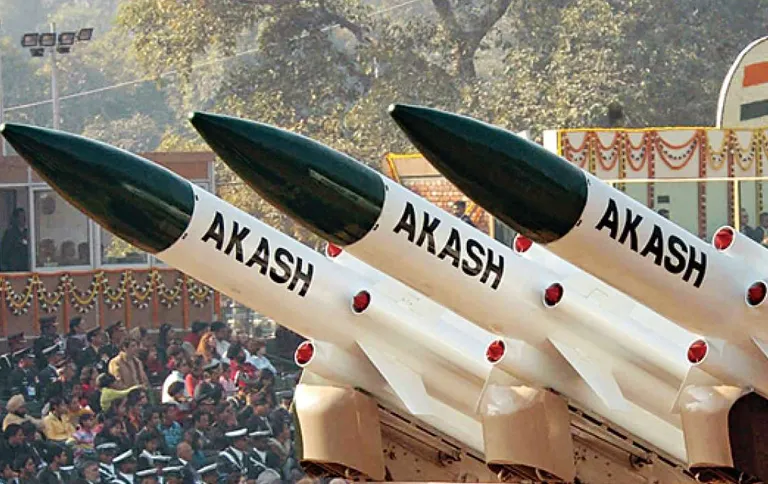
Overview of Operation Sindoor
Operation Sindoor, which took place in May 2025, was a landmark operation in the history of India’s armed forces in demonstrating the worth and efficacy of indigenous weapon systems against foreign-manufactured equipment employed by Pakistan. The Indian Armed Forces launched precision attacks on Pakistani military bases with indigenous defence technologies, with total operating success without the reported destruction of any Indian assets. The operation augmented India’s strengths in surveillance, air defence, electronic warfare, and strategic strike operations, consolidating the nation’s strides under the Atmanirbhar Bharat (self-reliant India) programme.
Operation Execution and Strategic Impact
The operation started on the evening of May 6–7, 2025, and continued for five days. The Indian Air Force (IAF), using advanced surveillance and electronic warfare capabilities, jammed Pakistan’s Chinese-supplied air defence systems, successfully completing a major offensive mission in just 23 minutes. Indian forces attacked several targets, including major air defence radar locations, effectively knocking out high-value systems like the HQ-15 surface-to-air missile (SAM) system in Lahore.
As per the Press Information Bureau (PIB), all offensive operations were carefully planned and executed flawlessly, using long-range drones, precision-guided weapons, and air defence systems, which enabled India to make targeted strikes without suffering any losses.
Performance of Indigenous Systems
Akash Missile System
The highlight of Operation Sindoor was the Akash short-range Surface to Air Missile system, which proved much better than Pakistan’s Chinese-manufactured HQ-9 SAMs. While Pakistan’s missiles were unable to effectively intercept Indian ordnance, Akash effectively pushed back against waves of enemy UAVs, drones, and missiles, with its combat efficiency proving evident in real-time.
Akashteer Project
The Akashteer project, a ₹2,000-crore undertaking signed in March 2023 and commissioned in 2024, turned out to be India’s air defence’s vital support structure. Designed and produced by Bharat Electronics Limited (BEL), Akashteer is a command and control system where all the radars and weapons are put together under one digital umbrella. It provides frontline Army Air Defence (AAD) units with real-time situational awareness, dynamic decision-making abilities, and enhanced targeting without causing friendly fire.
BEL claimed that Akashteer “excelled user expectations” and was a key factor in rendering Pakistan’s air operations ineffective. It provides a common air defence picture, standardises engagement procedures, and enhances automated tracking and response abilities.
Integrated Aerial Command and Control System (IACCS)
During the operation, the Indian Army’s AAD was also supported by the IAF’s IACCS, a highly advanced digital command network that combines inputs from multiple surveillance and radar sources to offer complete airspace control. This integration facilitated quick coordination among different branches of the armed forces during the strikes.
Pakistan’s Defensive Weaknesses
Pakistan retaliated with barrages of unmanned aerial vehicles (UAVs) such as those of Turkish origin, long-range rockets, and Chinese missiles after Indian attacks. Even with the size of the attack, India’s air defence system nullified most of the incoming hostile entities, with very few leaving an impact.
Debris recovered from the conflict comprised parts of Chinese PL-15 air-to-air missiles, Turkish drones, and commercial quadcopters. This verified the employment of foreign-supplied advanced weapons by Pakistan. India’s indigenous systems — especially Akash, Akashteer, and the IACCS — were superior in countering these threats effectively.
Growth in Defence Sector and Global Interest
The operation was a ratification of the growing defence industrial capabilities of India. The Defence Ministry emphasized exponential expansion in defence exports from ₹686 crore in 2013–14 to ₹23,622 crore in 2024–25, 34 times growth. Such a rise is a direct result of government initiatives to encourage indigenization, self-reliance, and global competitiveness in defence production.
Due to the successful demonstration of Operation Sindoor, various nations in Southeast Asia, West Asia, and Africa have expressed interest in procuring Indian-produced systems such as Akash and BrahMos. Officials expect a huge boost in international demand for these platforms based on their established reliability in actual combat situations.
Geopolitical and Military Context
Ceasefire Status and Military Communications
In spite of the ferocity of the operation, the situation on India’s western borders was relatively quiet following the strikes. As of the evening of May 13–14, nothing more had happened, and no official timetable had been announced for a fresh bout of Director General of Military Operations (DGMO) talks between India and Pakistan. Nevertheless, the two sides remain to use their established hotline channels, with regular contact on Tuesdays.
Pakistan’s Reliance on Chinese Military Equipment
Statistics from the Stockholm International Peace Research Institute (SIPRI) highlight Pakistan’s growing reliance on Chinese defence equipment. From 2015–19 to 2020–24, Pakistan’s arms imports increased by 61%, and China provided 81% of those imports during the latest period, compared to 74% in the earlier period. This increasing dependence on China’s defence system has shaped the character of Pakistan’s reactions and informed India’s countermeasures.
Technological Integration and Military Doctrine
The Indian Army’s Air Defence Artillery, which has been in existence since 1940 (re-named Army Air Defence in 2005), is now being redefined with digital integration and automation. Projects such as Akashteer and platforms like Akash are laying the ground for a continuous, multi-layered air defence doctrine.
BEL’s initiative is to reduce redundancy, improve interoperability between services, and establish a single source of air defence truth to facilitate rapid response under pressure. The Akashteer system is designed to talk to the IAF’s IACCS, establishing a joint operational theatre to track, monitor, and respond along India’s vast western border.
Conclusion
Operation Sindoor is an emphatic evidence of India’s changing defence abilities and the success of indigenous machinery over advanced outside equipment. Operation Sindoor, not only inflicted severe damage to Pakistan’s army infrastructure but demonstrated India’s technical maturity in aerial defence, command integration, as well as in unmanned warfare.
The success of the operation has implications for India’s global defence strategy, export potential, and regional military equilibrium. It emphasizes the operational preparedness of Indian forces and marks how efforts under Atmanirbhar Bharat are transforming India’s defence profile — growing more self-reliant, self-sustaining, and strategically competitive in the context of evolving regional threats.




